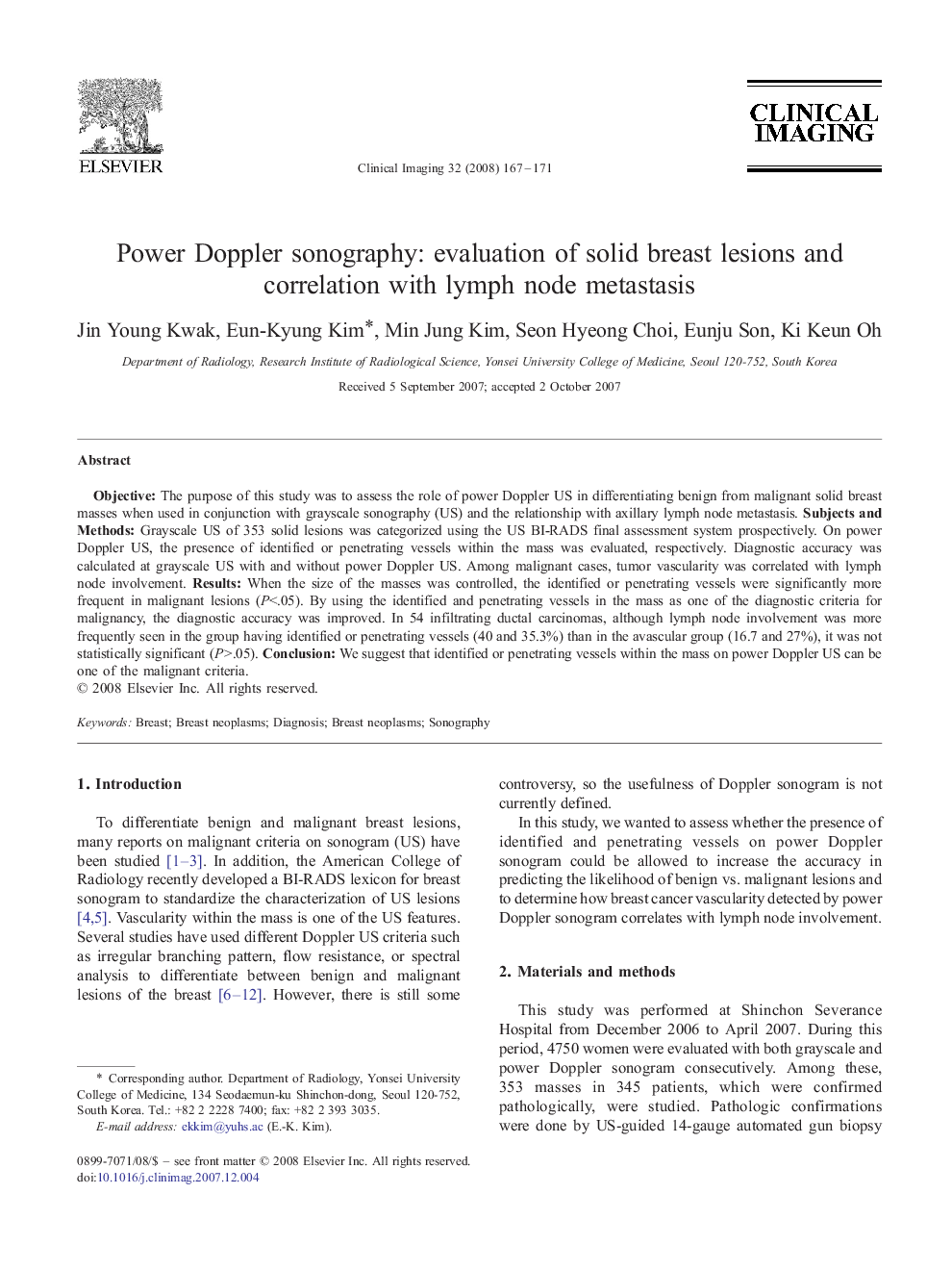| Article ID | Journal | Published Year | Pages | File Type |
|---|---|---|---|---|
| 4222372 | Clinical Imaging | 2008 | 5 Pages |
ObjectiveThe purpose of this study was to assess the role of power Doppler US in differentiating benign from malignant solid breast masses when used in conjunction with grayscale sonography (US) and the relationship with axillary lymph node metastasis.Subjects and MethodsGrayscale US of 353 solid lesions was categorized using the US BI-RADS final assessment system prospectively. On power Doppler US, the presence of identified or penetrating vessels within the mass was evaluated, respectively. Diagnostic accuracy was calculated at grayscale US with and without power Doppler US. Among malignant cases, tumor vascularity was correlated with lymph node involvement.ResultsWhen the size of the masses was controlled, the identified or penetrating vessels were significantly more frequent in malignant lesions (P<.05). By using the identified and penetrating vessels in the mass as one of the diagnostic criteria for malignancy, the diagnostic accuracy was improved. In 54 infiltrating ductal carcinomas, although lymph node involvement was more frequently seen in the group having identified or penetrating vessels (40 and 35.3%) than in the avascular group (16.7 and 27%), it was not statistically significant (P>.05).ConclusionWe suggest that identified or penetrating vessels within the mass on power Doppler US can be one of the malignant criteria.
